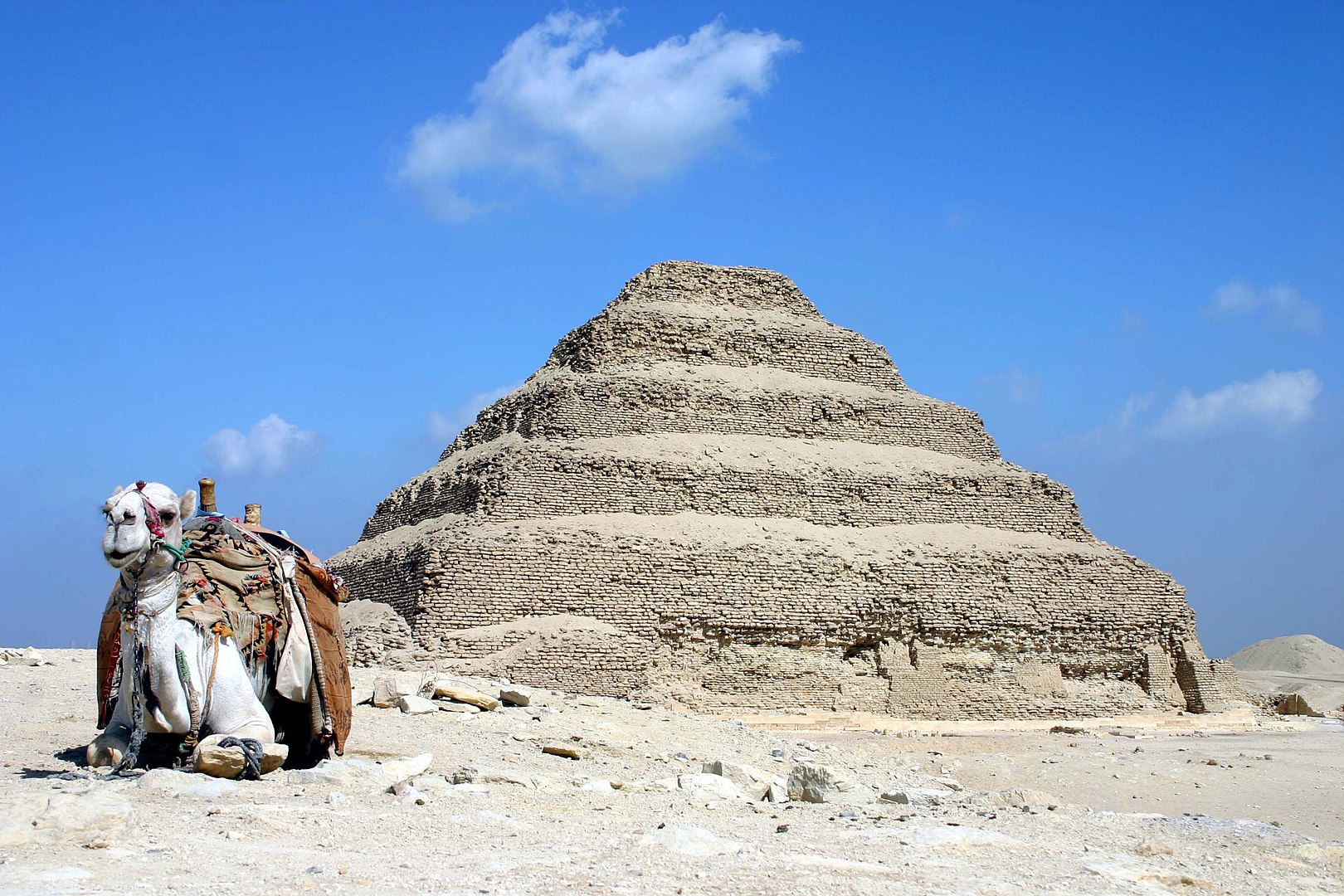
Image by Charles Sharp, via Wikimedia Commons
The compelling but less-than-straightforward question of how the ancient Egyptians built the pyramids has inspired all manner of theory and speculation, grounded to varying degrees in physical reality. Sheer manpower must have played a large part, and it’s certainly not beyond the realm of possibility that various simple machines were involved. But in certain cases, could the machines have been less simple than we imagine today? Such is the proposal advanced in a paper recently published in PLOS ONE, “On the Possible Use of Hydraulic Force to Assist with Building the Step Pyramid of Saqqara.”
“The Step Pyramid was built around 2680 BCE, part of a funerary complex for the Third Dynasty pharaoh Djoser,” writes Ars Technica’s Jennifer Ouellette. “It’s located in the Saqqara necropolis and was the first pyramid to be built, almost a ‘proto-pyramid’ that originally stood some 205 feet high,” as against the more widely known Great Pyramid of Giza, which reached 481 feet.
According to the paper’s first author Xavier Landreau, head of the French research institute Paleotechnic, his team’s intensive research on “the watersheds to the west of the Saqqara plateau” led to “the discovery of “structures they believe constituted a dam, a water treatment facility, and a possible internal hydraulic lift system within the pyramid,” which could have been used to move heavy limestone.
Not every Egypt expert is convinced. As the University of Cambridge’s Judith Bunbury puts it to Ouellette, “there is evidence that Egyptians used other kinds of hydraulic technologies around that time, but there is no evidence of any kind of hydraulic lift system.” At Smithsonian.com, Will Sullivan rounds up other skeptical reactions, including that of University of Toronto archaeologist Oren Siegel, who “tells Science News that the proposed dam could not have held enough water from occasional rain to maintain a hydraulic system.” Clearly, the view of the Step Pyramid taken by Landreau and his researchers will require more concrete support, as it were, before being accepted into the mainstream. But it’s still a good deal more plausible than, say, the somehow persistent notion that members of an advanced spacefaring civilization came to give the ancient Egyptians a hand.
Related content:
How Did They Build the Great Pyramid of Giza?: An Animated Introduction
What the Great Pyramids of Giza Originally Looked Like
Based in Seoul, Colin Marshall writes and broadcasts on cities, language, and culture. His projects include the Substack newsletter Books on Cities and the book The Stateless City: a Walk through 21st-Century Los Angeles. Follow him on Twitter at @colinmarshall or on Facebook.


Leave a Reply